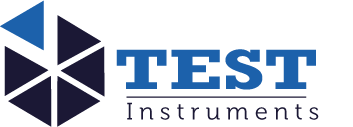Interactive courses via internet

BRAND: TEST INSTRUMENTS
CODE: TESTLearning200
TESTLearning200 is a flexible learning system, which allows to acquire knowledge based on the user’s time availability. He will be able to complete the different courses in the place and at the desired time through the Internet. In order to develop the different competencies in technologies, it is necessary to acquire theoretical knowledge about them previously. International Training, Presents the TESTLearning200 course program: the perfect theoretical complement to the teaching equipment offered. Access and use Through the access platform to the digital resources of International Training, the user will be able to connect and develop the different chapters and tests that complete these courses. Access and use of the TESTLearning200 courses, once acquired, is as simple as: • Access digital.smctraining.com and enter the User and Password provided.• Browse through the different chapters of the acquired courses, • When completing each chapter, carry out a TEST that validates the acquisition of its knowledge., • Once the total chapters of the course have been completed, the user receives an accrediting CERTIFICATE. Languages: TESTLearning200 is presented in six languages:SPANISH, ENGLISH, CZECH, GERMAN, BULGARIAN, HUNGARIAN,
1)Introduction to Industrial Automation.The course provides an introduction to industrial automation, expanding the user’s knowledge of the importance, its benefits and the energy sources used in these systems. Explore a specific assembly process for understanding automated systems in general. CHAPTERS: Introduction to automation, Automated process, Automated system
2)Pneumatic Technology. This course introduces the user to the basic principles, laws, and components used in pneumatic / electropneumatic systems. Presents the types, operational principles and symbols of the various components used in pneumatic / electropneumatic installations and circuits. Chapters: Introduction to pneumatics Pneumatic actuators, Pneumatic systems Directional control valves, Properties of gases Vacuum technology, Air compression and distribution 1 Measurement of pneumatic variables, Air compression and distribution 2 Pneumatic applications, Compressed air treatment.
3)Electrical technology. The course reviews the production, transport, distribution and use of electrical energy, including the components and control circuits used. The user will become familiar with different types of electrical circuits and applications and will be able to understand the laws and relationships between electrical quantities. Chapters: Electricity production Voltage, Transmission and distribution Electric power, Use of electricity Resistance, Atomic structure Ohm’s Law, Watt’s law electrical circuits,Electric current
4)DC Electricity. This course focuses on the theory of direct current circuits. Starting from the most common source of direct current supply, the battery, the connection of the same is deepened, as well as the different types of DC receiver circuits (series, parallel, etc.) Chapters: DC, Batteries, Circuit analysis
5)AC Electricity. In this course, the principles and laws associated with induction and electromagnetism are reviewed as a basis for understanding the operation and applications of alternating current circuits. Details on different devices such as coils, relays, transformers, and capacitors are also included. Concepts about magnetic fields, generation of alternating current, frequency, etc. complement the course. Chapters: Electromagnetism, Generation of alternating current waves, Electromagnetic devices, Transformers, Capacitors
6) Solid State. The course focuses on the study of solid state devices commonly used in automated equipment and installations. Starting with the study of the working principle of semiconductors (PN junction, etc.), the user will become familiar with the different solid-state devices such as diodes, rectifiers, transistors, optocouplers, etc. Chapters: Semiconductors, Solid state devices
7)Introduction to wiring. This course presents the components, tools and procedures used in the connection and wiring of control panels and electrical installations. The types of grounds, connectors, wire sizes, etc. are explained. to be used, as well as the different ways of connecting the transformers. Chapters: Cables, connectors and circuit protections, Transformer connection.
8)Introduction to electric motors. In this course, the principles of operation of basic electrical machines such as direct current and alternating current motors, both single-phase and three-phase, are studied. The connection, start-up and more typical applications of these motors are also studied. Chapters: DC motors, Single Phase AC Motors, Three-phase AC motors
9)Sensor technology. This course allows the user to become familiar with the fascinating world of sensors and transducers used in industry. Starting with the applications, characteristics and general parameters of the sensors, a review is made of the different types of sensors, their applications and symbology. Chapters: Introduction to sensor technology, Sensor characteristics and properties, Proximity sensors, Position, speed and acceleration sensors, Industrial process sensors, Advanced sensors.
10)Programmable Controllers. In the course, a review is made of the different Programmable Controllers, focusing the study on Programmable Logic Controllers (PLC). An introduction to digital electronics is made in order to understand the operation of the Programmable Controller. Its general structure, the structure of the CPU, concepts general programming and applications of these devices. Chapters: Introduction and history, Introduction to digital electronics, Types and functions of PLCs, General structure of PLC hardware, PLC physical integration, Internal structure of the CPU, General concepts of PLC programming, Common PLC Applications
11)Process control. This course introduces the user to Process Control systems. The different types of control are analyzed and the different blocks that constitute a closed-loop control are studied in depth, ending with an introduction to multivariable control systems. Chapters: Introduction to process controls, Process control systems, Setpoint / comparator, PID controller, Multivariate processes.
12)Hydraulic / Electrohydraulic.The course focuses on the study of hydraulic systems used in automated industry. The study of the different components used in electrohydraulic and proportional hydraulic hydraulics is carried out, analyzing their operating principle, applied physical laws and symbology. Chapters: Introduction to hydraulics Hydraulic actuators, Hydraulic Theory Classifications of Hydraulic Valves, Hydraulic fluids Piping and instrumentation, Hydraulic systems Hydroelectric symbology and circuitry.
13)Robotics. In this course, once an introduction to robotic systems has been completed, the safety of such systems is studied in depth, in the structure and programming of a Robot and in its most common industrial applications. Chapters: Introduction to Robotics Drivers and End Effectors, Robot safety Robot programs, Axes of a robot Industrial robot applications, Manipulator robot













